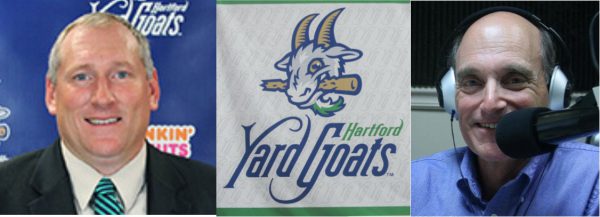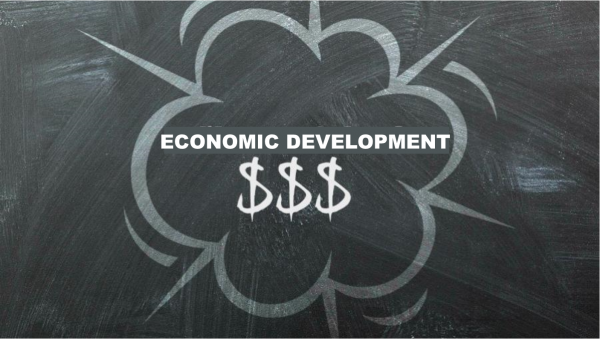Best Small Cities to Start A Business? CT Has Only One - Danbury - Among Top 700 in USA
/Only one Connecticut community is ranked in the top 700 “best small cities to start a business” in a new survey of 1,260 cities across the nation. Danbury, ranked at number 170, was the sole Connecticut city to earn a slot among the nation’s business-friendly small cities. The next Connecticut municipalities on the list were Torrington, ranked at number 749, and East Hartford, at number 775. To determine the best small cities in which to start a business, the financial website WalletHub’s analysts compared across three key dimensions: 1) business environment, 2) access to resources and 3) business costs. Included were cities with a population of between 25,000 and 100,000 residents.
Among Connecticut municipalities, also reaching the top 1,000 nationwide were East Hartford (775), Bristol (836), Westport (861), West Hartford (876), and Shelton (919).
The Danbury city website highlights that “assets and resources include a pro-business climate, a creative, educated and talented workforce, an excellent education system, transportation advantages, a superior quality of life and much more.” The website highlights a Danbury business each week.
"We analyzed 21 Connecticut cities and out of these, Danbury ranked the highest at 170," said WalletHub analyst Jill Gonzalez. "Although it offers a strong business environment, the city has high business costs overall. Most of the cities (14 of them) ranked below the 1,000 rank because these fail to offer a thriving business environment, with little access to the resources needed to start a business as well as restrictive labor costs."
The analysis evaluated each of the three key dimensions using 16 relevant metrics. Each metric was graded on a 100-point scale, with a score of 100 representing the most favorable conditions for launching a business. “ A city with a smaller population can offer a greater chance of success, depending on an entrepreneur’s type of business and personal preferences,” WalletHub points out.
The business environment category (50 points) includes average length of work week, average growth in number of small businesses, number of startups per capita, average revenue per business, average growth of business revenues and industry variety. The access to resources category (25 points) includes financing accessibility, human resource availability, higher education assets, working age population growth and workforce educational attainment. The business costs category includes office space affordability, labor costs, corporate taxes, and cost of living.
Also earning a slot on the “Best Small Cities to Start a Business” list were East Haven (1,004), Norwich (1,014), New London (1,015), New Britain (1,022), West Haven (1,026), Wethersfield (1,028), Newington (1,032), Milford (1,053), Stratford (1,060), Norwalk (1,063), Meriden (1,079), Middletown (1,117), Naugatuck (1,185) and Trumbull (1,239).
Data used to create the ranking were collected from the U.S. Census Bureau, Bureau of Labor Statistics, Federal Deposit Insurance Corporation, AreaVibes, Yelp, Indeed, U.S. News & World Report, Tax Foundation and LoopNet, according to WalletHub.
The top small cities for business in the U.S., according to the analysis, were Holland, MI; Carbondale, IL; Springville, UT; East Chicago, IN; Jefferson City, MO; Wilson, NC; Enid, OK, Rio Rancho, NM; Clearfield, UT and Cheyenne, WY. The top ranked city in New England was East Providence, RI, ranked at number 38.




 The backdrop is offered by more than 700 global companies that have subsidiaries here, employing more than 100,000 people, the Organization for International Investment points out. The state’s convenient access to a variety of transportation options all provides access; there were 4.6 million tons of cargo carried on Connecticut rails in 2015, for example, and 11.4 million tons of freight shipped through Connecticut ports in 2013.
The backdrop is offered by more than 700 global companies that have subsidiaries here, employing more than 100,000 people, the Organization for International Investment points out. The state’s convenient access to a variety of transportation options all provides access; there were 4.6 million tons of cargo carried on Connecticut rails in 2015, for example, and 11.4 million tons of freight shipped through Connecticut ports in 2013. l and freight movement by rail and highway makes Connecticut a prime location for domestic and international trade,” the report points out. Leading exports include: Aerospace/Transportation Equipment, Non-Electrical Machinery, Computers and Electronics, Chemicals, Electrical Equipment, Fabricated Metals Production, and Primary Metal Manufacturing.
l and freight movement by rail and highway makes Connecticut a prime location for domestic and international trade,” the report points out. Leading exports include: Aerospace/Transportation Equipment, Non-Electrical Machinery, Computers and Electronics, Chemicals, Electrical Equipment, Fabricated Metals Production, and Primary Metal Manufacturing. s specific to their industry.
s specific to their industry.
 We also want development to support healthy lifestyles and enable a vital New Haven.
We also want development to support healthy lifestyles and enable a vital New Haven.



 es for connectivity, just behind Jersey (New Jersey) and ahead of Newark, Yonkers, Paterson, Elizabeth, and Sunnyvale, Hayward, Fremont and Vallejo in California.
es for connectivity, just behind Jersey (New Jersey) and ahead of Newark, Yonkers, Paterson, Elizabeth, and Sunnyvale, Hayward, Fremont and Vallejo in California. he study’s methodology.
he study’s methodology.




 The five-story building will see researchers will move in to the new space this summer, beginning in July. It will be the first structure on the Storrs campus to utilize an “open lab” concept for research. The shared research space and open floor plan is intended to make it easier for scientists from different disciplines to collaborate, fostering innovation,
The five-story building will see researchers will move in to the new space this summer, beginning in July. It will be the first structure on the Storrs campus to utilize an “open lab” concept for research. The shared research space and open floor plan is intended to make it easier for scientists from different disciplines to collaborate, fostering innovation, 




 “The full ecosystem around the defense industry in the state must come together to address these overlapping trends – and many of these collaborative initiatives are already producing significant results – but state government still has a unique role to play in bringing the right ideas to the table,” the report explains.
“The full ecosystem around the defense industry in the state must come together to address these overlapping trends – and many of these collaborative initiatives are already producing significant results – but state government still has a unique role to play in bringing the right ideas to the table,” the report explains.



























